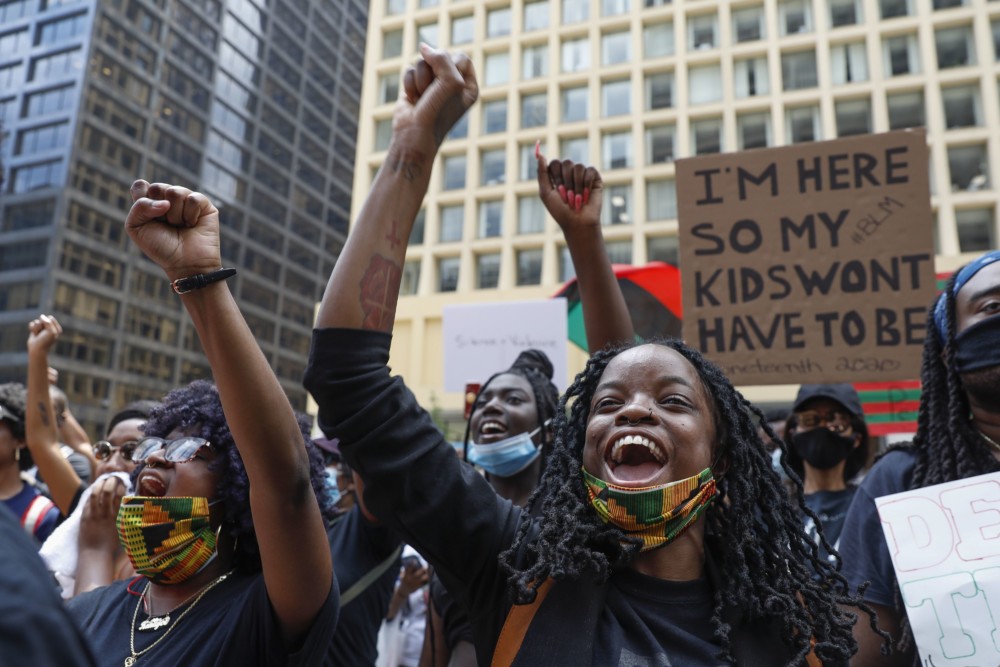By Marie McCullough
The Philadelphia Inquirer
WWR Article Summary (tl;dr) Marie McCullough takes a look at the latest patterns of COVID_19 spread.
Philadelphia
The United States may be seeing the most compelling evidence yet that the best way to stop the coronavirus is also the most disruptive and difficult: Stay home and avoid other people.
At first glance, the evidence seems conflicting.
States in the South and West that reopened their economies early and with few precautions are now grappling with huge surges in daily case counts, hospitalizations, and deaths.
Yet Philadelphia, Chicago and other cities across the country have not seen the sharp, sustained spikes that were expected after hundreds of thousands of people gathered for protests against police brutality. Daily demonstrations, some capped by riots, began about a week after George Floyd was killed by Minneapolis police on May 25. The maximum incubation period for COVID-19, the time between getting infected and showing symptoms, is believed to be two weeks, so any fallout should be clear by now.
The leading theory to explain this paradox is that being outdoors is safer than indoors. Numerous studies support this. Japanese researchers, for example, found the odds of indoor transmission of the coronavirus were about 19 times greater than in the open air.
But a new study funded by the National Bureau of Economic Research offers another explanation: The protests prompted an overall increase in people staying home, which mostly offset any impact of transmission among protesters.
“This is consistent with avoidance behavior,” said Andrew Friedson, a health economist at the University of Colorado, Denver and co-author of the paper. “These protests are large gatherings which are likely to spread the disease. But if there’s an offsetting behavior, an increase in social distancing, then that may have caused the overall spread to stay flat or even go down a bit.”
The researchers used cell-phone tracking data from Safegraph to see what percentage of the population did not leave home in big cities with protests, compared with cities that didn’t have protests.
The results clearly linked an increase in stay-at-home behavior to the civil unrest. Curfews played a part in this behavior but did not completely account for it.
“It’s entirely possible that protesters have gotten COVID-19” while demonstrating, Friedson said. “That’s a question for contact tracers. But other things, going to bars, seeing friends, not wearing masks, also increase the spread.”
Those “other things” are the main driver of the renewed outbreaks in states including Arizona, Nevada, Oklahoma, Texas, Mississippi and Florida, states that had largely reopened. While expanded testing accounts for some of the soaring case numbers, the proportion of positive tests suggests increased transmission. In Arizona, 23% of tests over the last week came back positive. Several governors have suspended further reopenings or reimposed some restrictions.
There are no data on infections among protesters. But circumstantial evidence, anecdotes, and basic biology suggest some protesters got sick and spread the coronavirus even if overall case numbers didn’t spike.
An increasing number of new COVID-19 cases across the country are among people in their 20s, 30s, and 40s, the New York Times reported. Protesters were predominantly in these younger age groups.
Philadelphia health officials urged protesters to get a diagnostic test for the virus, even if they wore masks. Vybe Urgent Care Centers and Sayre Health Clinic, which don’t restrict testing to people with symptoms or a doctor’s order, reported an uptick in testing as some people followed the city’s advice.
Another reason to expect transmission during protests: Philadelphia police used teargas and pepper spray that left peaceful protesters reeling, coughing, and retching. If any of them had the virus, and many people who are infected have no symptoms, they would have spewed infectious droplets into the air.
Philadelphia has seen an increase in cases among people ages 20 to 34, who now make up about a quarter of all cases. But the timing of the increase does not point to the protests, said Thomas Farley, the city’s health commissioner.
On Friday, Farley warned that an uptick in cases in recent days, coinciding with the gradual reopening of businesses, is worrisome. He said he would reconsider whether the city can move into the “green” phase next week.
“Cases in the community are no longer decreasing,” Farley said as he announced 143 new cases Friday.
___
Distributed by Tribune Content Agency, LLC.














































































































































































































































































































































































